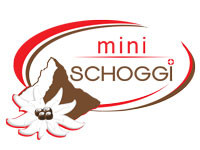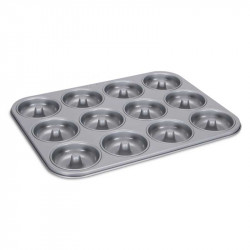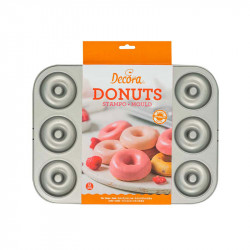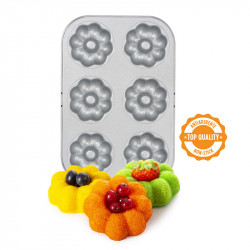A Mail deliveries
Order by 4 pm = delivery the next working day.
Free delivery
From CHF 100 purchase
-
MenuBack
-
Online Store
-
-
-
- Couverture
- Temperature control units
- Aids for chocolate
- Chocolate molds
- Praline fillings
- Chocolate ingredients
- Praline hollow body
- Chocolate colors
- Chocolate tattoos
- Chocolate packaging
- Bean to Bar
- Material for cutting chocolates
- Batons with Kirsch
- Airbrush for chocolate
- High Heels Accessories
- Textured films for chocolate
- Chocolate fountain & fondue
-
-
-
-
-
- Cakes Fillings & Ingredients
- Fondant & Marzipan
- Cakes tools
- Cake rings
- Silicone molds
- Decorative mats
- Baking pans for cakes
- Cake stand
- Cakes packaging
- Airbrush for cakes
- Sugar flowers accessories
- Cake Topper & Wedding Figurines
- Cakes dummies
-
-
-
-
-
-
-
-
-
-
-
-
-
-
-
-
-
-
-
-
-
-
-
- Baking chocolate
- Glucose & Sorbitol
- Cocoa beans
- Cocoa nibs
- Monin syrup
- Champagne & Alcohols
- Freeze dried fruits
- Cake & cake glaze
- Flours & baking ingredients
- Chocolate coating & chocolate
- Milk powder
- Granules
- Nuts & Nougat
- Fruit puree
- Creams & Fillings
- Egg yolk & egg white
- Fruit powder
- Special ingredients
- Fondant & Flower Paste
-
-
-
-
-
-
-
- Punching, cutting & embossing
- Mixing bowls & whisks
- Chocolate material
- Thermometer & Burner
- Gloves & Protective Material
- Smoothing & Modeling
- Roll out bar
- Dough scraper & horn
- (Flour) sieves
- Brushes & Tweezers
- Cake turntable
- Spatula & Spatula
- Silicone embossing molds
- Insert strips & cake slices
- Measuring cup
-
-
-
-
-
-
-
-
-
-
-
-
-
-
-
Schablonen & Stencils
-
-
-
-
-
-
-
-
-
-
-
Courses
-
-
- Current courses
- Praline courses
- Chocolate courses
- Chocolate kiss course
- Macaron courses
- Cake courses
- Baking courses
- Patisserie courses
- Ice cream course
- Guetzli, Cookie & Confectionery Courses
- Bread courses
- Pasta courses
- Apéro course
- Cooking courses
- Cupcakes courses
- Éclair course
- Courses in Zurich - Adliswil
- Children's courses
-
-
- Team Events
- Hen Night
- Retail Store
-
About Us
-
-
-
DirectionsDownload relevant PDF now.
-
-
-
Recipes blog
-
-
Recipes Blog
-
-
-
Shipping and Payment
-
- Online Shop
-
- Novelties
- Sale
- Gifts Cards
- Stencils & Stencils
- Chocolate and pralines
- Couverture
- Temperature control units
- Aids for chocolate
- Chocolate molds
- Praline fillings
- Chocolate ingredients
- Praline hollow body
- Chocolate colors
- Chocolate tattoos
- Chocolate packaging
- Bean to Bar
- Material for cutting chocolates
- Batons with Kirsch
- Airbrush for chocolate
- High Heels Accessories
- Textured films for chocolate
- Chocolate fountain & fondue
- Couverture
- Cakes & Pies
- Ice cream
- Bread
- Macarons
- Hearty
- Recipe booklets & books
- Cupcakes
- Dessert
- Cake Pops
- Edible decorations
- Fillings & Ingredients
- Glucose & Sorbitol
- Cocoa beans
- Baking chocolate
- Cocoa nibs
- Monin syrup
- Champagne & Alcohols
- Freeze dried fruits
- Cake & cake glaze
- Milk powder
- Flours & baking ingredients
- Chocolate coating & chocolate
- Granules
- Nuts & Nougat
- Fruit puree
- Creams & Fillings
- Egg yolk & egg white
- Fruit powder
- Special ingredients
- Fondant & Flower Paste
- Food Colors
- Auxiliary means
- Spouts & piping bags
- Fondant, marzipan, flower paste
- Bakeware
- Aprons & Potholders
- Cookie cutters
- Season
- Candles
- Party accessories
- Cocktail
- Cookie & cookie tins
- Tableware
Donuts
There are 10 products.
Active filters
What are donuts?
Donuts are round and fried pastries made from a yeast dough. They often have a round shape with a hole in the center and are topped with various toppings or fillings, such as frosting, chocolate, sprinkles or jam. Donuts are a popular treat, often eaten as a snack or for breakfast.
Who invented the donuts?
The exact origin of donuts is not clearly known, but they became popular in the USA. There are several stories about the invention of donuts. One of them says that they were first prepared by Dutch settlers in North America in the 19th century. Another story says that a Dutch sailor named Hansen Gregory invented donuts on a ship in the 1840s by wrapping dough around a spindle handle and then deep-frying it in hot fat. Regardless of their exact origins, donuts are now a popular treat worldwide.
How do you make the perfect donuts?
To make perfect donuts, please follow these steps:
1. Prepare ingredients: You need flour, sugar, yeast, salt, milk, eggs and butter for the dough. For the filling and topping you can use chocolate, jam, powdered sugar and other desired ingredients.
2. Prepare dough: Mix the flour, sugar, yeast and salt in a bowl. Then add the milk, eggs and melted butter. Knead the dough until it becomes smooth and elastic.
3. Let the dough rest: Let the dough rise, covered, in a warm place until it doubles in volume. This usually takes about 1-2 hours.
4. Roll out dough: Roll out the risen dough on a floured surface until it is about 1-2 inches thick.
5. Cut out donut shapes: Use a round cookie cutter to cut circles out of the dough. You can also cut smaller circles in the center of each circle to achieve the classic donut look.
6. Let donuts rise: Place the cut out dough circles on a baking sheet lined with parchment paper and let them rise again, covered, until they have doubled in volume. This usually takes 30-45 minutes.
7. Fry donuts: Heat oil in a pot or deep fryer to about 170-180 degrees Celsius. Gently deep fry the donuts for about 2-3 minutes on each side until golden brown. Then take them out of the oil with a slotted spoon and drain them on paper towels.
8. Fill and decorate: Once the donuts have cooled, you can fill them with a filling of your choice by inserting a piping nozzle into the side and carefully injecting filling. Then you can decorate them with chocolate or powdered sugar as you like.
9. Enjoy: Serve the freshly prepared, perfect donuts and enjoy them preferably still warm!
Have fun
What is the world's best donut recipe?
Since this is a subjective question, there is no definite answer as to which is the world's best donut recipe. Tastes are different and everyone has their preferences. However, there are many great donut recipes with different variations. One option is the classic yeast donut recipe with a sugar glaze or colorful sprinkles. But there are also variations like chocolate, peanut butter, cinnamon sugar or a fluffy gluten-free dough. It's best to try different recipes and find out which one suits your taste best. By the way, you can find a great donut recipe on our recipes blog.
How can I make donuts in the baking pan?
To make donuts in a baking mold, you can follow these steps:
1. First, you need a donut baking mold, which you can either order online or buy in a specialty store. In the online store of miniSchoggi you can find different donuts molds made of silicone mold or as baking mold. You can also find mini donuts and classic donuts molds in the miniSchoggi online store. If you prefer to see the molds on site, you can also find donut molds directly in the miniSchoggi store in Zurich Adliswil, where you will find a large bakery store.
2. Prepare the dough by mixing all the ingredients. A common donut recipe consists of flour, sugar, milk, eggs, butter, baking powder and salt. You can also add vanilla or lemon extract to flavor the batter.
3. Pour the batter into a piping bag or plastic bag with the corner cut off to make it easier to pour into the donut baking pan.
4. Spray or brush the baking pan with a little cooking oil or butter to prevent the batter from sticking. How do I make donuts in the baking pan?
5. Fill each donut well in the baking pan about halfway with batter. Be careful not to overfill, as the batter will rise during baking.
6. Place the baking dish in the preheated oven and bake the donuts according to the recipe instructions. Baking time may vary depending on the oven, but is usually about 12-15 minutes.
7. While the donuts are baking, you can prepare the glaze or topping. For example, you can mix powdered sugar with water or milk and add food coloring or flavorings to taste. You can also use chocolate icing, frosting, or sprinkles.
8. Once the donuts are golden brown, remove them from the oven and let them cool slightly before removing them from the baking pan.
9. Dip the donuts in the prepared icing, spread it on them, or sprinkle the toppings of your choice on them.
10. Let the icing set and enjoy your homemade donuts!
Which galsures are suitable for the donuts?
There are several glaze recipes that are suitable for donuts. Here are some popular options:
1. Sugar glaze: a simple glaze made from powdered sugar and water or lemon juice. It is sweet and gives the donuts a shiny coating.
2. Chocolate glaze: a mixture of melted chocolate or cocoa powder, powdered sugar and milk. It gives the donuts a delicious chocolate flavor and a shiny finish.
3. Vanilla Glaze: a mixture of powdered sugar, milk and vanilla extract. It gives the donuts a subtle vanilla flavor and a shiny texture.
4. Caramel Glaze: a glaze made from sugar, butter and cream that is lightly cooked to create a sticky-sweet caramel glaze. This glaze gives the donuts a rich and delicious flavor.
5. Fruit Jam: Instead of a traditional glaze, donuts can also be filled with fruit jam or marmalade. This variation gives the donuts a fruity and juicy taste.
Of course, there are many more variations and combinations of glaze recipes for donuts, depending on personal taste and preferences.
What is the shelf life of donuts?
The shelf life of donuts can vary depending on what ingredients and preservatives are used. Generally, freshly baked donuts are best the day they are purchased or prepared. They can then be stored in an airtight container at room temperature for 1-2 days.
If the donuts are filled with cream, cream filling or fresh fruit, they should be stored in the refrigerator and eaten within 1-2 days.
Industrially produced donuts from the supermarket can often have a longer shelf life, as they usually contain preservatives. The exact shelf life is written on the packaging. However, it should be noted that donuts can lose their taste and consistency over time.







